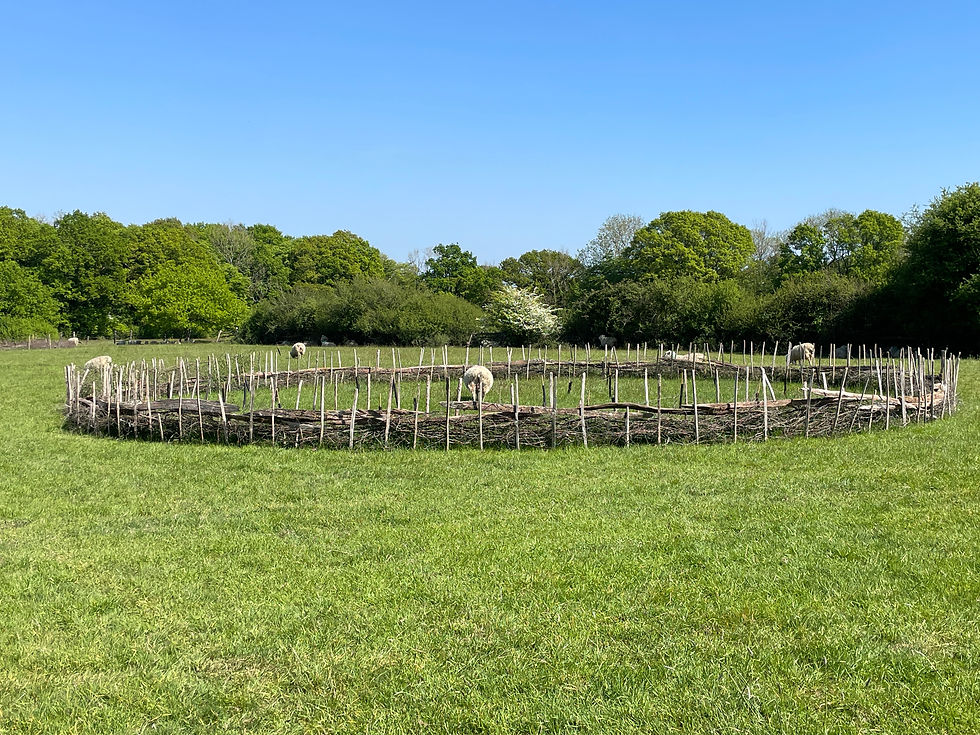April 2025
- piersclark7
- May 2
- 5 min read
We have a new welcome sign for the site.

The woodland animals have been getting increasingly active:
This month I started undertaking detailed surveys of the crayfish. This involves using callipers to measure various parts of their carapace, sexing them, assessing for disease, etc. I carefully record the data and then, if I am confident it’s an invasive specie, cull it humanely. Sadly we are now 99% certain that the crayfish species we have are the invasive Red Swamp crayfish. I have not yet completely given up on finding a native White Claw though…



Moving now to rodents, we captured this intriguing video of a Pygmy Shrew bumping into a Wood Mouse. We think it was just an accidental bump rather than a territorial battle as they both appear to be completely surprised by the event (and shrews have notoriously bad eyesight).
Three amazing Pygmy Shrew facts are:
· They can lose up to 28% of their body mass in winter. They don’t just lose fat, they actually shrink their organs (including brain, skeleton etc). This ability is called the Dehnel’s Phenomenon.
· Pygmy shrews are solitary (except during breeding season) and are aggressive towards other shrews. They maintain home ranges of between 500 to 2000 square metres in an area. That’s pretty impressive for something so small
· The pygmy shrew is the most ancient species of European shrew, with a fossil record dating back as far as the Pliocene, 5.3 million years ago.
Apparently the way to identify them from the Common Shrew is because their tails are hairy and about 70% the length of the body (Common Shrews tails are 50% of body length). Good luck spotting that in the video.
Perhaps not surprisingly (because they eat Shrews, Voles and Mice) at the same location we also captured this fleeting image of a weasel.
On April 9th two swarms of bees were delivered to our new Bee Hive area, just in time to pollinate the 66 orchard trees which are nicely coming out in blossom. Our team of volunteers planted these in January and it looks like we have had a 100% survival rate.



To resolve this we added more brash. However within minutes of finishing we watched her brazenly return and effortlessly scale the newly-raised barrier. She had her baby lamb with her who diligently watched mom and then copied, scaling the fence in a single bound. From now on we are calling them Yaro and Javier (after Yaroslava Mahuchikh and Javier Sotomayor the Ukrainian and Cuban high jumpers).
Staying with the sheep, I had the wonderful experience of working with our shepherd as he ‘dyed and tarred’ some of the recent new-borns. I am certain he found my childlike exuberance difficult to comprehend, but it beat doing my usual desk job. To drive this point home, the following day I attended a 4 hour business meeting in Nuneaton and found myself gazing longingly out the office block window recalling that just 24 hours previously I had been handling a 1 hour old lamb. I currently live two very different lives and I have a clear favourite.






Finally, we are now on Google Maps. If you are able to add a review that would be greatly appreciated. The link is here: Aspect Nature Reserve - Google Maps


Your roe doe video is a great chance to see the difference between winter and summer coats, on that species of deer!
The red brown colour on the neck shows her summer coat.
The shaggy grey brown on her body is what remains of her winter coat
These are so wonderful, thank you Piers. I was part of the Senior Moments meeting and was totally spellbound 😍. I would love to be added to your monthly newsletter please:
sandie.hurdle15@gmail.com
Many thanks, Sandie